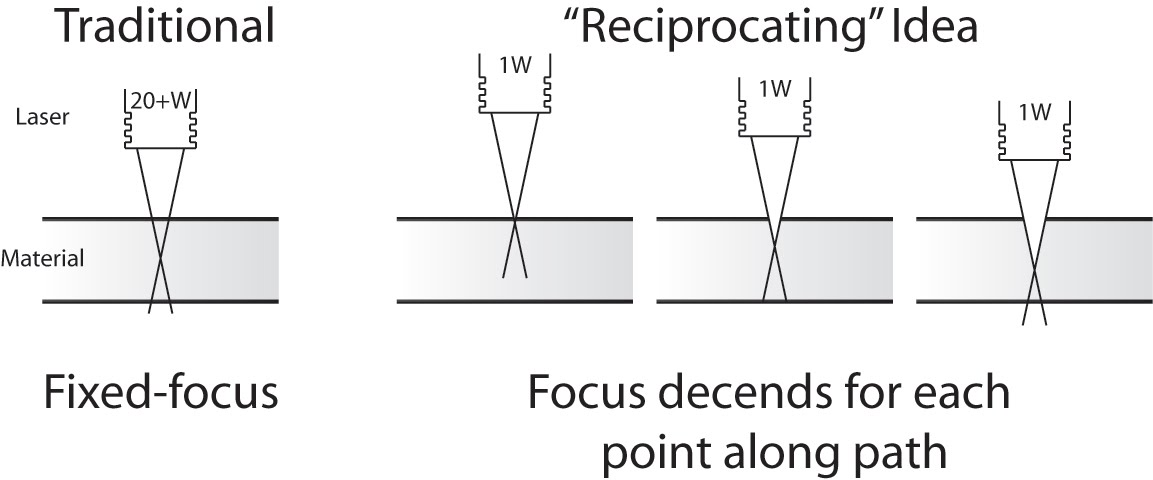After consideration, maybe not. Following Maker Faire Bay Area 2011 I was again prompted to investigate the feasibility of a lasercutter. Now, I don’t have any great big grand plans for one – I just think it would be awesome to have one and I would be able to think of some pretty sweet uses for it if I had one lying around.
In any case, from what I can see there are some small and very professional looking fully assembled models starting around $8000. 1 As a hobbyist with no actual plans for immediate use of a lasercutter, this is way way too much for random projects.
I’ve seen a few websites that purport to have models for around $2,500 or so with kit options starting around $1800. The way I look at it, there’s not a lot that can go wrong with a 3D printer. A laser on the other hand… could blind, burn, and cut from an arbitrary distance. Besides, if a company can’t put together a simple WordPress website, I’m hesitant to drop thousands of dollars on their product. 2
There’s also two DIY options – the open source BuildLog.net and the promised-to-be-open-source Lasersaur. It’s not exactly fair to criticize them for incomplete documentation. BuildLog.net appears to be a collection of people documenting their laser cutter builds and aren’t advertising themselves as a complete tutorial. Lasersaur started off as a very popular Kickstarter project but their site was almost devoid of information or developments until they re-surfaced at Maker Faire Bay Area 2011. Going through the Lasersaur’s bill of materials I stopped tallying the cost once it hit $4,000.00. At that point, it probably doesn’t make sense for me to try building my own.
For the time being, I don’t think I’m going to invest in a lasercutter, DIY kit, or open source project. Besides, there are plenty of places in the Bay Area nearby I could have something cut or rent time on a machine. If there was a project for up to, say, $2500 and had really great documentation, I might reconsider – but I don’t see that happening soon.

